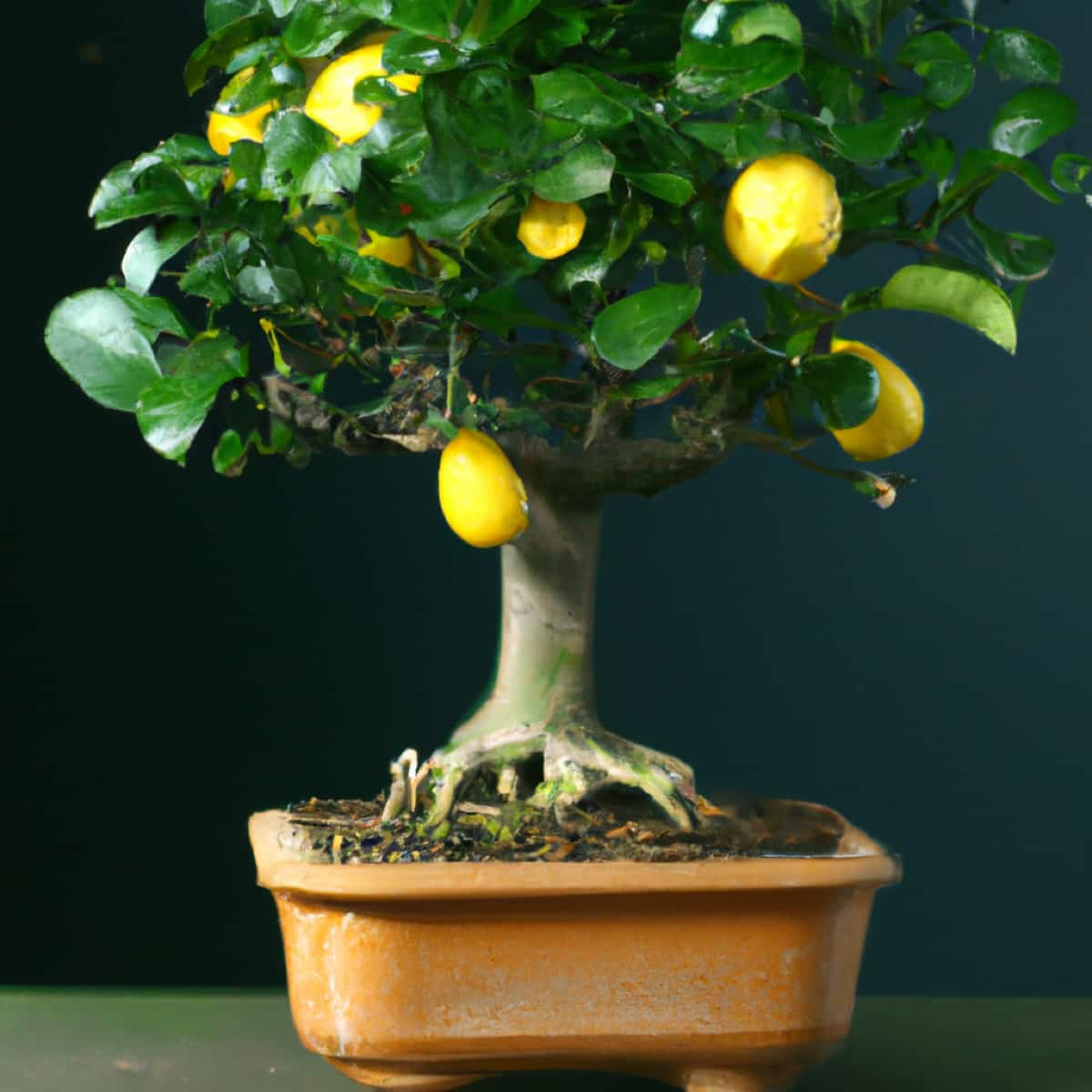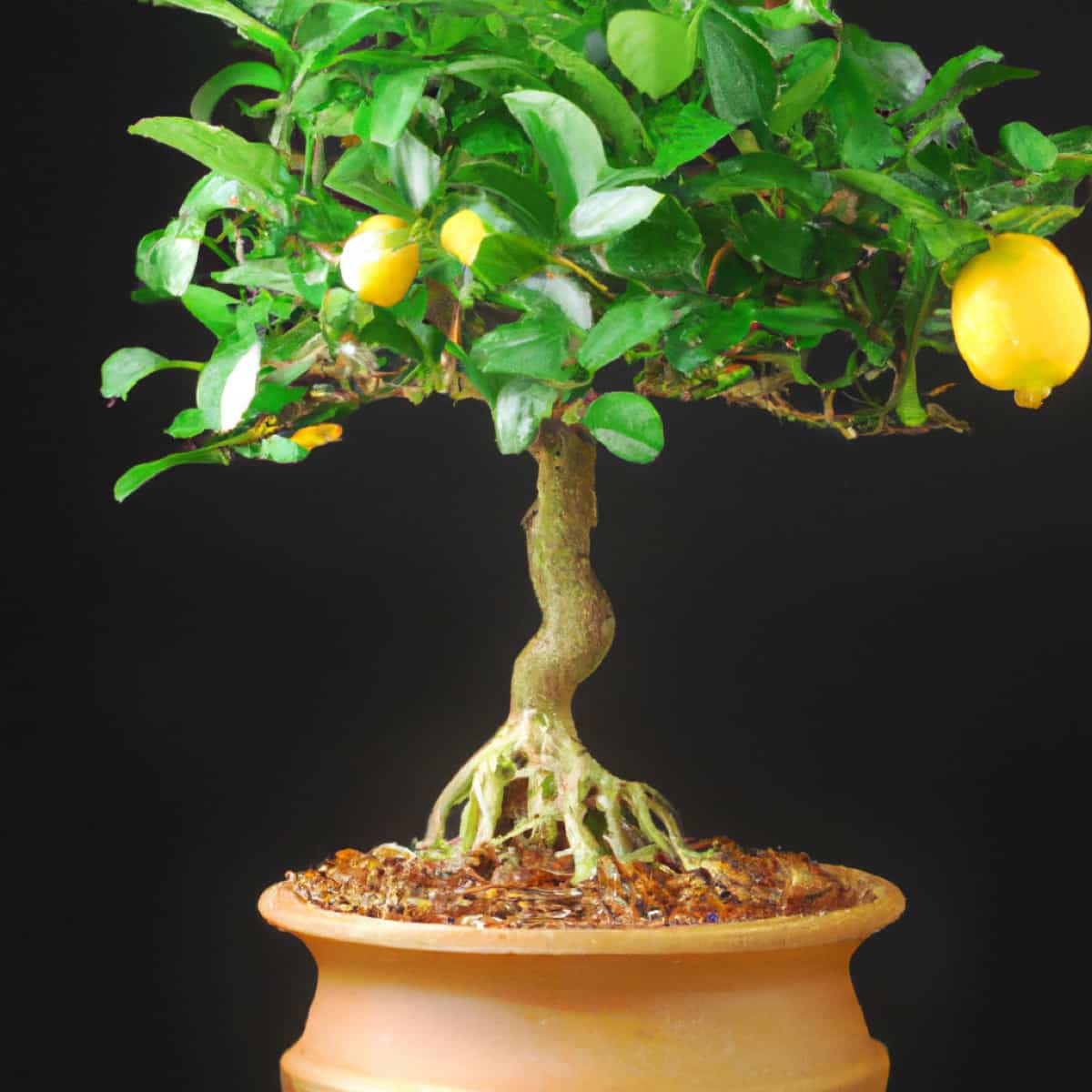Bonsai is an exquisite art form, combining horticultural knowledge and creative expression, aiming to cultivate miniature trees that accurately mimic the shape and scale of full-size trees. How to bonsai a lemon tree is a question often asked by beginners, which demonstrates the appeal of this lovely citrus tree with its vibrant fruit and sweet-scented blossoms. Interestingly, the process involves growing a Bonsai lemon tree from seed or from Bonsai Lemon tree seeds, which can be quite an experience full of excitement and joy.

How to Grow and Care for Lemon Bonsai
How to Plant a Lemon Bonsai Tree
Starting a lemon bonsai tree begins with choosing between seeds or a young sapling. Choosing Bonsai Lemon tree seeds could be an exciting adventure for the daring gardener, as one can witness the entire lifecycle. First, soak the seeds in warm water overnight. Next, plant them in a sandy loam soil mix that drains well.
It’s best to plant multiple seeds as not all will germinate. Once they sprout, select the healthiest ones for further growth. Those who prefer a head start can opt for a young lemon tree sapling. Whether growing a bonsai lemon tree from seed or sapling, ensure it receives plenty of sunlight for optimal growth.
Tips for Growing Lemon Bonsai Indoors
Lemon bonsai trees can thrive indoors, provided they are placed in an environment that mimics their natural habitat. An important aspect is light. Lemons are sun-loving trees; thus, they need 10-12 hours of light daily. If natural light isn’t enough, supplemental artificial lights can help.
Temperature control is also essential. Lemon trees favor warmer temperatures, ideally between 55 to 85 degrees Fahrenheit. Also, maintaining high humidity levels is critical, especially during winter. Lastly, avoid placing the tree near heat vents or cold drafts, as sudden temperature changes can stress the tree.
Step-by-step Guide to Caring for Lemon Bonsai
Caring for a lemon bonsai involves a series of steps performed routinely. Watering is first on the list. These trees like moist soil but are not waterlogged. Therefore, check the soil regularly and water when the top layer appears dry. Secondly, pruning is crucial to maintain the tree’s shape and promote healthy growth. Regularly prune the branches and pinch back new growth to encourage branching. Thirdly, feed the tree biweekly in the growing season and monthly in winter. Choose a balanced, slow-release fertilizer for best results.
Best Soil Mix for Lemon Bonsai
A good soil mix is crucial for the healthy growth of a lemon bonsai. It needs to have excellent drainage to prevent waterlogging and root rot. A mix of loam, coarse sand, and peat moss in equal proportions provides the right drainage and water retention balance. Adding a bit of compost or well-rotted manure enhances the nutrient content. The soil should be slightly acidic, as lemon trees prefer a pH between 6.0 and 7.0.
Watering Schedule for Lemon Bonsai Trees
Watering lemon bonsai requires a balance. Excess watering causes root rot; insufficient watering leads to tree dehydration. The best approach is to water when the top inch of the soil feels dry. In hot weather, this might be daily, while watering could be reduced to every other day in cooler conditions. Always water thoroughly, allowing excess water to drain out the bottom of the pot.
Pruning Techniques for Lemon Bonsai
Pruning is critical to bonsai cultivation, shaping trees, and promoting dense foliage. With lemon bonsai, pruning should be done in early spring before new growth starts. Remove any dead or diseased branches first, then prune to shape the tree. Trim back overly long branches and pinch back new growth to encourage branching. Leave at least two leaves on each pruned branch to facilitate photosynthesis.
In case you missed it: 1-Acre Lemon Cultivation Project Report: Production Cost and Profit Analysis

Fertilizing Requirements for Lemon Bonsai
Like all citrus trees, Lemon bonsai trees are heavy feeders and require regular fertilization. A balanced, slow-release fertilizer is given to the tree every two weeks in the growing season and once a month in winter to supply the necessary nutrients. Additionally, supplementing with a citrus-specific fertilizer ensures the tree gets essential micronutrients.
Common Pests and Diseases of Lemon Bonsai
Lemon bonsai trees are susceptible to several pests, including aphids, scale, and spider mites. Regularly inspect the tree for signs of these pests, such as discolored or curled leaves. If detected, treat the tree with an organic insecticide. Diseases to watch out for include root rot caused by over-watering and leaf spots. Early detection and treatment can save the tree from severe damage.
Winter Care for Lemon Bonsai Trees
Winter care for lemon bonsai involves protecting them from the harsh cold. If temperatures drop below 50 degrees Fahrenheit, bring the tree indoors. However, maintain high humidity as the dry indoor air can stress the tree. Also, reduce watering and fertilization during this period, but don’t let the tree dry out completely.
Repotting Lemon Bonsai: When and How to Do It
Repotting lemon bonsai is essential for their health and growth. Generally, young trees need to be repotted every two years, while mature ones can go for three to five years. The best time to repot is early spring. To do it, carefully remove the tree from its pot, prune the roots, then replant in a larger pot with fresh soil. After repotting, water thoroughly and keep the tree in a shady spot for a few weeks to recover.
Restyling Lemon Bonsai: Shaping Your Miniature Tree
Once you’ve grown your lemon bonsai to a suitable size, the next step is to shape it according to your desired style. Restyling your lemon bonsai is a delicate task that requires attention and care. Begin by studying your tree from all angles, imagining the possible shapes it can take. Traditionally, bonsai trees are styled to mimic nature; hence think about the forms you’ve seen in full-sized lemon trees.
In case you missed it: Natural and Organic Ways to Treat Lemon Tree Leaf Curl: Fix With Effective Home Remedies

Use a bonsai wire to guide the branches into the desired shape. It’s important to wind the wire carefully around the branch to avoid damaging it. Bend slowly and gently, considering that drastic bends can harm the tree. Over time, the tree will adapt to this shape. After a few months, carefully remove the wire once the tree has taken shape. Remember, patience is key when shaping your lemon bonsai, and the result can be a beautiful miniature lemon tree that is a source of pride and joy.
Conclusion
Cultivating a lemon bonsai is an exciting and rewarding journey that requires dedication, care, and a touch of creativity. From the initial steps of choosing whether to grow a bonsai lemon tree from seed or sapling, through the daily care routines such as optimal watering, regular pruning, and balanced fertilizing, to the challenges of tackling pests and diseases, each phase brings its unique set of experiences.
The winter brings its own set of care requirements, and the activity of repotting introduces a new growth phase for the tree. One of the most artistic and fulfilling parts of this process is the bonsai’s styling, creating a miniature yet realistic representation of a lemon tree. This growth, care, and transformation journey is not only about raising a plant. Still, an exploration of art, nature, patience, and mindfulness provides a sense of accomplishment, tranquility, and joy.
- Feed Your Flock for Less: Top 10 Tips to Save on Chicken Feed
- Ultimate Guide to Ossabaw Island Hog: Breeding, Raising, Diet, and Care
- Hatching Answers: The Top 10 Reasons Your Chickens Aren’t Laying Eggs
- Eggs and Economics: Breaking Down the Cost of Raising Backyard Chickens
- Defend Your Greens: Proven Methods to Keep Iguanas Out of Your Garden
- Ultimate Guide to Cinnamon Queen Chicken: A Comprehensive Guide for Beginners
- Ultimate Guide to California Tan Chicken: Breeding, Raising, Diet, Egg-Production and Care
- Ultimate Guide to Marsh Daisy Chicken: Breeding, Raising, Diet, and Care
- 10 Types of Chicken Farming Businesses You Can Start for Profits